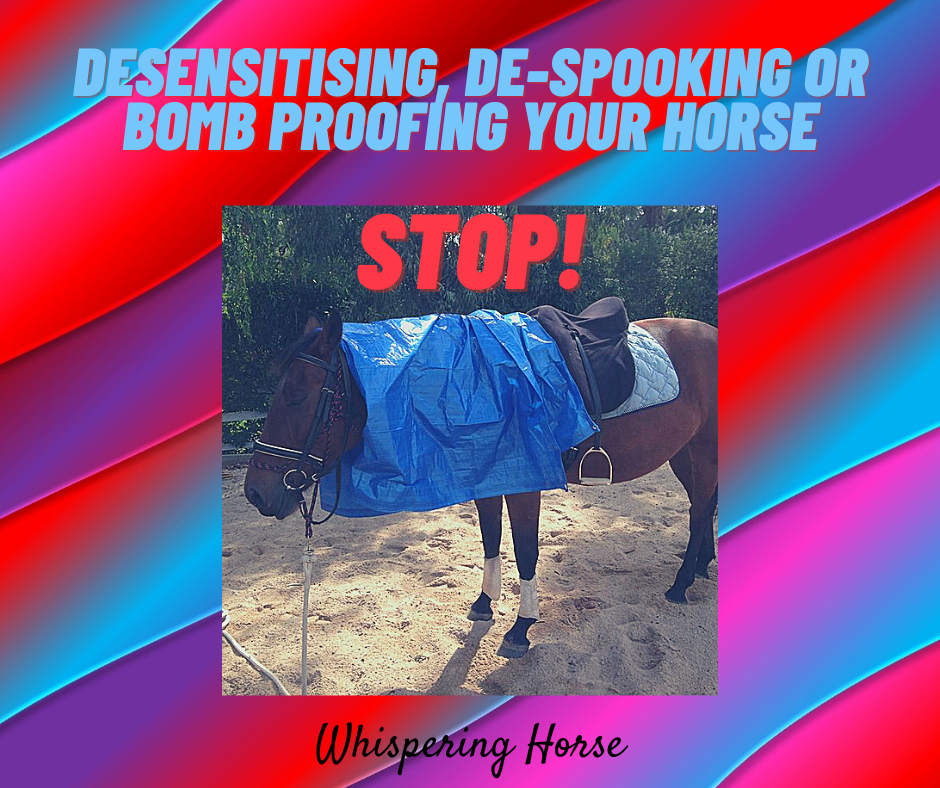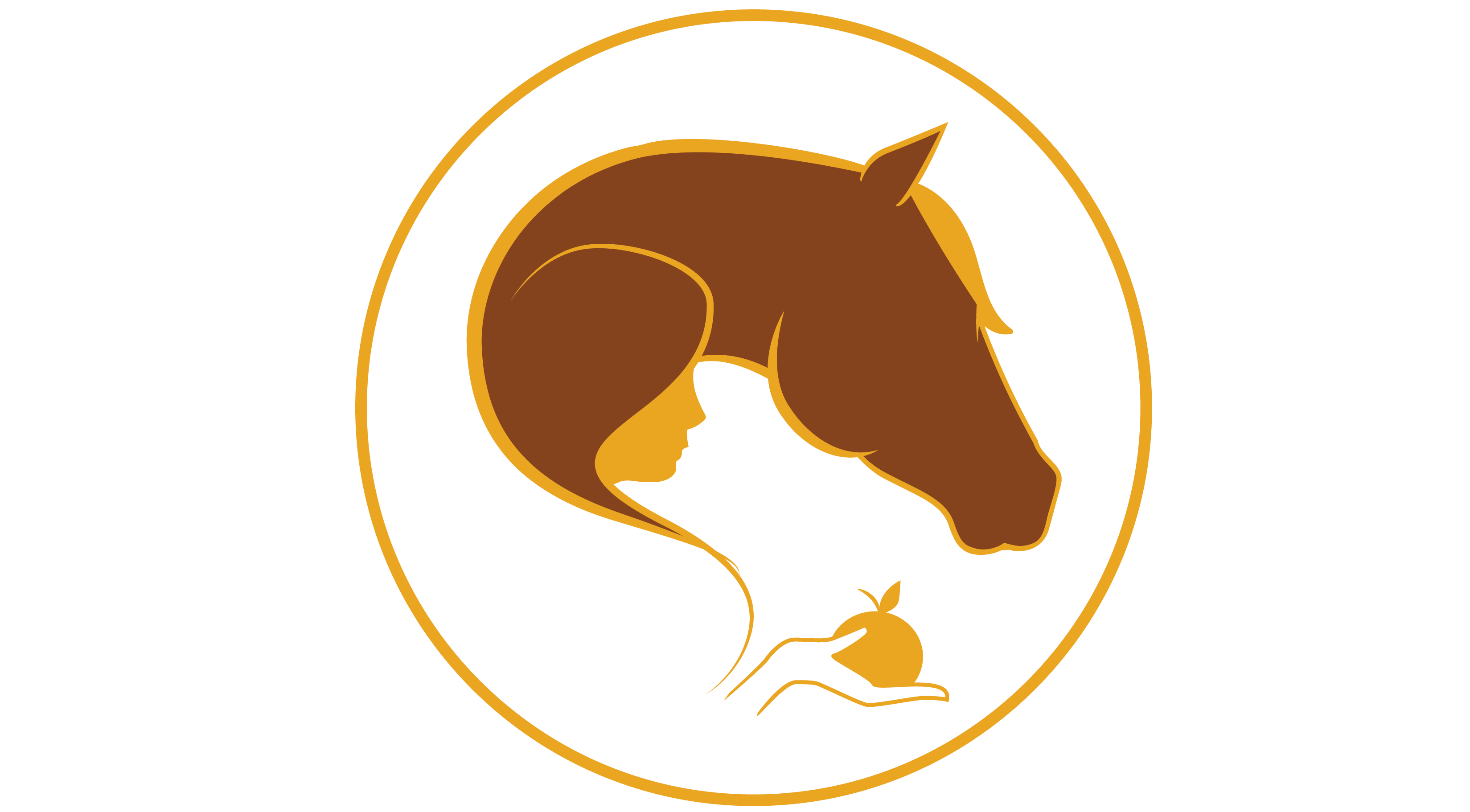Desensitisation, the good and the bad (don't get them mixed up)

There seems to be a lot of confusion about Desensitization.
People are either thinking it’s great to try to desensitize their horse, de-spook or bomb-proof their horse.
OR there are people saying NOT to use Desensitization because it’s cruel and mean and it floods the horse.
The problem is that the same word is being used in two very different ways, so it becomes very confusing.
![]()
![]() If you were to google Desensitisation for horses, you will see many images of horses being subjected to tarps, flags, big balls, streamers, hoses, water obstacles, balloons, pool noodles and even rather large blow up dinosaurs.
If you were to google Desensitisation for horses, you will see many images of horses being subjected to tarps, flags, big balls, streamers, hoses, water obstacles, balloons, pool noodles and even rather large blow up dinosaurs.
What you’ll also find is lots of advice about how to do it and it’s all simply descriptions of Negative Reinforcement (pressure and release) training or worse, Flooding. The advice usually states that you apply the scary thing and keep doing it, even if the horse reacts, moves, fights or tries to escape and only remove/release when the horse stops.
What this teaches the horse is that the scary thing is going to be touching, flapping, put on top of them or underneath them and they can try to escape and fight it, but it will only go away when they stop, when they stop behaving, then they will experience the release, but really it’s just relief. What then happens is that the horse learns that their behaviour is pointless and they have no control over the scary thing or being able to escape from it, except to stop responding. This is what can potentially lead to Learned Helplessness.
![]()
![]() Alternatively, there is Desensitization that is done Systematically and in conjunction with Counter Conditioning. This means we are desensitizing their response to a thing and at the same time, changing (Countering) their emotional response to the thing by pairing it with something they like and for horses, this is usually done with food. We condition them to go from scared or simply neutral, to liking the thing and it being a predictor of food. Done poorly this can also work backwards, where the food can come to predict the arrival of the scary thing. It has to be done correctly in order to change the response and how the horse feels about the thing.
Alternatively, there is Desensitization that is done Systematically and in conjunction with Counter Conditioning. This means we are desensitizing their response to a thing and at the same time, changing (Countering) their emotional response to the thing by pairing it with something they like and for horses, this is usually done with food. We condition them to go from scared or simply neutral, to liking the thing and it being a predictor of food. Done poorly this can also work backwards, where the food can come to predict the arrival of the scary thing. It has to be done correctly in order to change the response and how the horse feels about the thing.
I’m not going to go into a full explanation, but instead post a number of excellent links.
But I want to highlight that not all Desensitization is bad and that there are currently two ways of doing it out there in the horse world. One is effective, kind and humane and makes the horse feel good. The other is a way to shut down and suppress a horse’s response, without changing how they feel. In fact it often creates worse feelings and reactive horses or alternatively shut down “bombproof” horses.
***** Avoid getting the two mixed up *****
An excellent summary on Desensitisation and Counter Conditioning from the ASPCA:-
An overview of multiple resources from Eileen Anderson:-
My favourite blog from Eileen of a specific example of how to plan and implement a DS/CC program:-
Another great description from Zazie Todd PhD, at Companion Animal Psychology:-
Here’s a short sample of re-introducing Mercedes to her old bridle. I had to break the bridle down into the most basic set up and even then, I had to take it very slowly. I did a horrible “before” to show how averse she was to the bridle and therefore it slowed down the DS/CC process as well.
You can watch the video here:-
Finally, a short video of one step out of many many steps of some DS/CC training with one of my donkeys. When you watch it, you’ll see why I rarely take video of this type of training. It’s basically like watching paint dry and that’s how it is supposed to look. There should be no exciting reactions or jumping or running around and most definitely no equines on line or in round pens either. Don’t be fooled into thinking he’s ok with the clippers either, I’m simply keeping his exposure so low, that he’s happy to stand and munch and is even mildly curious. That’s what we want to see!!
Video link of Seymour and the clippers:-

